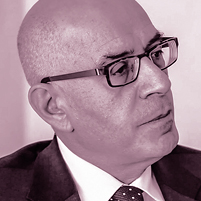Two more things. One is that societies have, since the dawn of time, developed their own methods of cultural production. Which is why more attention should be given to local government. Local government is actually one of the world’s most important concepts: It’s the means by which a group or a region governs itself, and there must be a sociological relationship between local culture and local government for things to work. Istanbul Foundation for Culture and Arts (İKSV) once drew up a report on this issue in response to the question of how local governments might pave the way for cultural planning. If cultural production is a constitutional right, and government is obliged to ensure this right by establishing the necessary conditions, then local governments are in a much better position to carry out this function freely and independently.
We also tend to overlook the culture industry, and the question is, does government have obligations in this sphere? Everyone with an ounce of sense opposes censorship, but does government have an obligation to check occasional “destructiveness” in the culture industry? Because everywhere in the world culture is divided in two. There is high culture comprising opera, ballet, painting, sculpture, and contemporary art. And there is popular culture. It’s out of the question for high culture to compete with popular culture on numbers alone. A Rolling Stones concert might attract a hundred thousand people, far above the number that a modest but intellectually momentous exhibition could ever hope to attract. So, how do we protect the area of culture that is small in size but huge in intellectual value? The duty of government is to provide some form of support in order to defend high culture from the advances of the culture industry.
There are also concrete, functional steps that the state can take, such as tax policies. Special tax policies for book sales and the cinema rescued these sectors in France. We’ve yet to develop a similar awareness and approach in Turkey.









